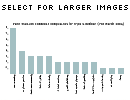



This project addresses
design as a form of research
and, conversely, it positions
research as an approach to design. Providing people with tangible
feedback on public dimensions of their behavior creates a framework for ongoing
innovation. Providing such feedback in the context of a busy metropolitan
railway station illustrates how system dynamics and processes of emergent
behavior
can
be used to efficiently address complex problems by distributing the responsibility
of design to those whose activity it directly impacts. Transitional spaces
are inherently dynamic. When feedback is used to blur the distinction between
research
and design, important social dimensions of these spatial dynamics are
brought into focus.
There are many ways to integrate research and design. This project has
evolved over many months and it has taken various forms along the way
(including that
of a graduate design studio that I recently taught). The concept of participatory
design has, however, persistently guided the project's evolution.
People who use Penn Station have played an important role in shaping the
project from the very beginning. In
fact, the idea of providing location-oriented feedback sprung from
research indicating that the primary source of frustration that people
experience when using Penn
Station is the congestion that develops in areas of the architectural
space that are too compartmentalized to provide a perspective on the ever-changing
ebbs and flows of foot traffic. This frustration
was
voiced again
and
again over
the
course of many interviews
and
it was observed on
an ongoing basis throughout several months of ethnographic field work.
It is clearly a problem that needs to be addressed. But participatory design
is more than a means of defining
problems. It is also a way of involving people in efforts to solve problems.
People who use Penn Station — travelers
and commuters alike — have
been involved at every stage in the development of this project. The
feedback that they have provided has guided each iteration of the design
as it has evolved from a series of conceptual sketches to functional prototypes.
People who use the station on a regular basis have even been asked to prepare
story-boards, renderings, and other forms of documentation to ensure that
their perspectives inform the design effort.
The development of this project is not yet complete. More research
and design will be needed if it is to become a viable means of
addressing the tangible problems that people face when traveling through
Penn Station. But as should be clear by now, the goal of this project is
not only to solve tangible problems. It is also to
experiment with different approaches to the socio-technical processes of
research and design. This being the case,
it is extremely unlikely that the
development of this project will ever be regarded as fully complete.



.